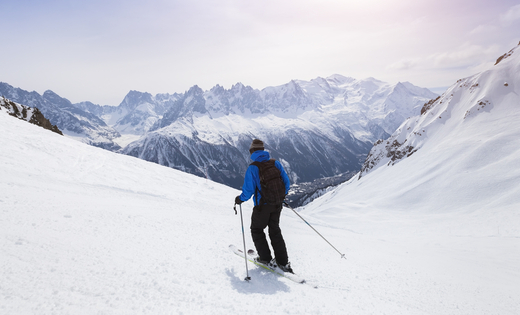
Chamonix comprises six ski areas and several small fairytale villages. It’s the highest peak in Western Europe, and offers some of the most exhilarating skiing you’ll find anywhere.
This is also where you’ll find the legendary 20km Valleé Blanche off-piste ski route with a descent of 2700m. But there are also large beginner areas.
Chamonix is also home to Chalet Arberons (by Cold Fusion Chalets), which is exclusively for solo travellers.
There are various sleeping arrangements available, and large social areas designed to help people relax in the company of like-minded strangers.
The nightlife is enviable, so whether you're looking for the loudest party, or the classiest, the après ski scene at Chamonix is the reason the term even exists.
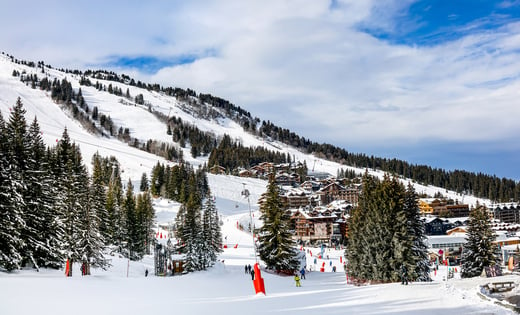
This is the ultimate in luxury romantic breaks.
The only problem is figuring out where you’ll spend your money. There are 11 Michelin star restaurants, and you can spend over a grand a night on lodging if you want to. So if you're trying to impress your beloved, or simply create a romantic memory you'll never forget, this is it.
Accommodation is spread across four villages, and you can move seamlessly between your luxury digs, amazing restaurants, spas, and boutiques, all the while taking in the picturesque views.
As for the skiing, Courchevel claims to have the largest ski area in all the world — 600km of slopes over three valleys. They guarantee snow throughout the winter and panoramic views. The resort also aims to provide easy slope access to people with mobility issues (handiski), and offers specialised teaching for people living with disabilities.
As with many ski resorts in Europe, bring your dancing shoes, because the Courchevel après ski scene is one you’ll want to indulge in.
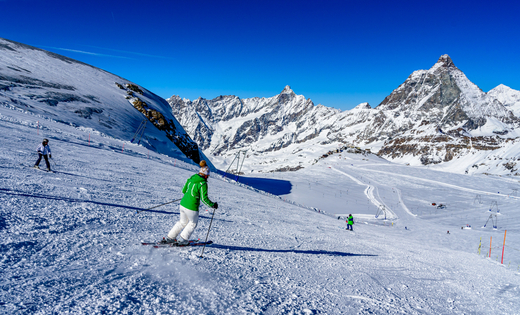
Zermatt is synonymous with glamor. But recently the resort has been marketing kids and teen coaching weeks to Australians. So it seems possible to leave your diamonds at home and ski here like a regular person.
You can ski and snowboard at Zermatt every day of the year, and there are no shortage of ways to experience this resort, including by helicopter), or take the next step and heli-ski. Intermediate skiers will be happiest here, with advanced snowriders needing to go off-piste for a challenge.
One of the best things for teenagers at Zermatt is the snow-park, which is set up with obstacles (like tunnels, hills, small jumpts, etc) and a Funslope. There’s also an Escape room and plenty of other youngsters to have fun with in the Igloo Village.
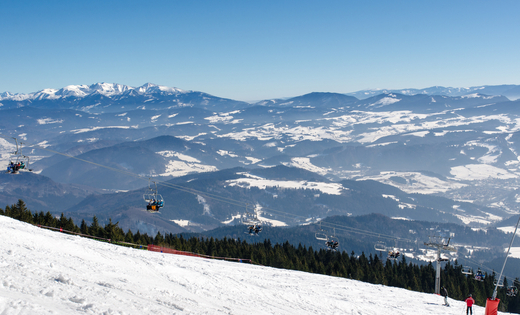
This affordable Slovakian resort is ideal if you’re travelling with young kids.
The great thing about this resort is that it caters very well for absolute beginners, meaning your little ones will probably enjoy themselves more. There are also lessons in various languages.
Donovaly has one of the largest children’s areas in Europe and there are also plenty of non-ski related activities, like dog sledding, flood-lit tobogganing, ice-skating, and an Ice Camp.
It’s good to remember that skiing in Europe is not limited to Switzerland, France, Italy and Austria, and winter in central Europe is a unique experience. And there’s plenty to do around the town of Donovaly itself, such as visiting Habakuky, a fairytale village that young kids will find unforgettable.
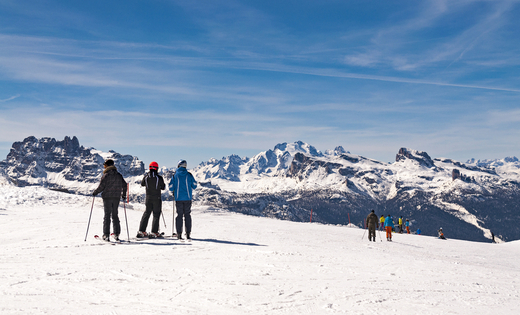
Located in the world-famous Dolomites, Cortina d’Ampezzo has a sophisticated front and glamourous heart. It’s easy to see why it featured in the James Bond movie, For Your Eyes Only.
Beginners can enjoy flat practice areas, but advanced skiers can put themselves through their paces on the steepest black run in the Dolomites, the Canalone Staunies. And if you really want to go all-out Bond, you could try heliskiing at the nearby (and incredibly beautiful) Valle d'Aosta, which is about six hours away by car.
Cortina also has a thousand years of history, so there's plenty to absorb and explore by just wandering the streets.
The après ski here is more genteel than other resorts, but what it lacks in exciting nightlife, it makes up with cobbled streets, wood-fired pizzas, and cozy wine bars...and if you’re lucky you’ll catch a glimpse of the enrosadira, the pink colour that washes over the Dolomites at sunset.
There’s somewhere to ski somewhere in Europe every single day of the year. Having said that, here are a few parameters.
Official Ski Season (except Finland which stays open until early June).
Best deals (though you risk poor snow conditions at the latter end).
Peak season. This means it’s busy pretty much everywhere, but you’ll get good snow coverage and a lively atmosphere.
Also a busy period, with prices almost double the standard rate.


The high number of avalanches in the alpine regions of France, Austria, Switzerland, and Italy leads to injury and death every year. Backcountry explorers are advised to carry a shovel and a beacon or transceiver, and always pay attention to the colour-coded avalanche warning signs on the slopes. It’s important to note that our travel insurance doesn’t cover back-country skiing.

A combination of low temperatures and lack of snow (which was experienced across Europe in 2019) makes for an icy surface. Hard snow makes it much harder to control your skis, so if you’re a beginner, it might be best to stay away. It’s not as forgiving as the soft, powdery stuff, so you’re much more likely to get hurt when you fall.

Ideally, prepare for your trip by starting your pre-ski fitness regime around six to eight weeks before you head off on holiday. Even light skiing uses muscles you might never even realised you had. With some light weights, yoga or pilates, you could avoid serious injury.